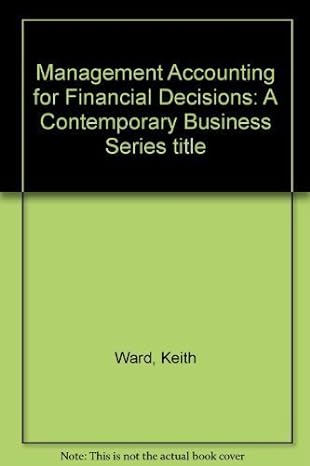Answered step by step
Verified Expert Solution
Question
1 Approved Answer
Lacy is a single taxpayer. In 2020, her taxable income is $42,000. What is her tax liability in each of the following alternative situations? Individuals
Lacy is a single taxpayer. In 2020, her taxable income is $42,000. What is her tax liability in each of the following alternative situations?
Individuals
Schedule X-Single
| If taxable income is over: | But not over: | The tax is: |
|---|---|---|
| $ 0 | $ 9,875 | 10% of taxable income |
| $ 9,875 | $ 40,125 | $987.50 plus 12% of the excess over $9,875 |
| $ 40,125 | $ 85,525 | $4,617.50 plus 22% of the excess over $40,125 |
| $ 85,525 | $163,300 | $14,605.50 plus 24% of the excess over $85,525 |
| $163,300 | $207,350 | $33,271.50 plus 32% of the excess over $163,300 |
| $207,350 | $518,400 | $47,367.50 plus 35% of the excess over $207,350 |
| $518,400 | $156,235 plus 37% of the excess over $518,400 |
Schedule Y-1-Married Filing Jointly or Qualifying Widow(er)
| If taxable income is over: | But not over: | The tax is: |
|---|---|---|
| $ 0 | $ 19,750 | 10% of taxable income |
| $ 19,750 | $ 80,250 | $1,975 plus 12% of the excess over $19,750 |
| $ 80,250 | $171,050 | $9,235 plus 22% of the excess over $80,250 |
| $171,050 | $326,600 | $29,211 plus 24% of the excess over $171,050 |
| $326,600 | $414,700 | $66,543 plus 32% of the excess over $326,600 |
| $414,700 | $622,050 | $94,735 plus 35% of the excess over $414,700 |
| $622,050 | $167,307.50 plus 37% of the excess over $622,050 |
Schedule Z-Head of Household
| If taxable income is over: | But not over: | The tax is: |
|---|---|---|
| $ 0 | $ 14,100 | 10% of taxable income |
| $ 14,100 | $ 53,700 | $1,410 plus 12% of the excess over $14,100 |
| $ 53,700 | $ 85,500 | $6,162 plus 22% of the excess over $53,700 |
| $ 85,500 | $163,300 | $13,158 plus 24% of the excess over $85,500 |
| $163,300 | $207,350 | $31,830 plus 32% of the excess over $163,300 |
| $207,350 | $518,400 | $45,926 plus 35% of the excess over $207,350 |
| $518,400 | $154,793.50 plus 37% of the excess over $518,400 |
Schedule Y-2-Married Filing Separately
| If taxable income is over: | But not over: | The tax is: |
|---|---|---|
| $ 0 | $ 9,875 | 10% of taxable income |
| $ 9,875 | $ 40,125 | $987.50 plus 12% of the excess over $9,875 |
| $ 40,125 | $ 85,525 | $4,617.50 plus 22% of the excess over $40,125 |
| $ 85,525 | $163,300 | $14,605.50 plus 24% of the excess over $85,525 |
| $163,300 | $207,350 | $33,271.50 plus 32% of the excess over $163,300 |
| $207,350 | $311,025 | $47,367.50 plus 35% of the excess over $207,350 |
| $311,025 | $83,653.75 plus 37% of the excess over $311,025 |
Tax Rates for Net Capital Gains and Qualified Dividends
| Rate* | Taxable Income | ||||
|---|---|---|---|---|---|
| Married Filing Jointly | Married Filing Separately | Single | Head of Household | Trusts and Estates | |
| 0% | $0 - $80,000 | $0 - $40,000 | $0 - $40,000 | $0 - $53,600 | $0 - $2,650 |
| 15% | $80,001 - $496,600 | $40,001 - $248,300 | $40,001 - $441,450 | $53,601 - $469,050 | $2,651 - $13,150 |
| 20% | $496,601+ | $248,301+ | $441,451+ | $469,051+ | $13,151+ |
Step by Step Solution
There are 3 Steps involved in it
Step: 1

Get Instant Access to Expert-Tailored Solutions
See step-by-step solutions with expert insights and AI powered tools for academic success
Step: 2

Step: 3

Ace Your Homework with AI
Get the answers you need in no time with our AI-driven, step-by-step assistance
Get Started


